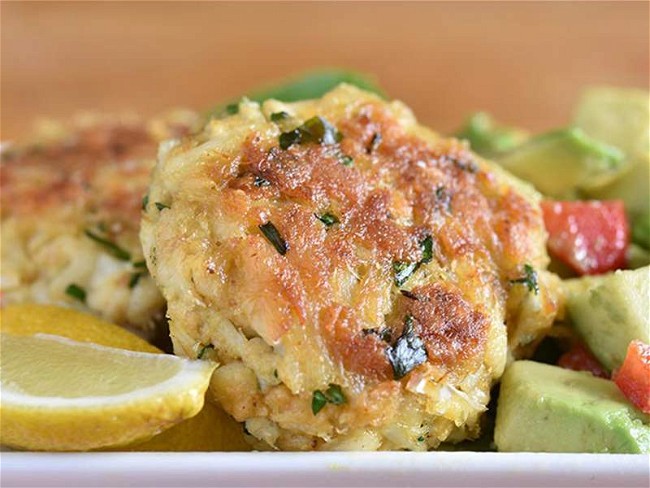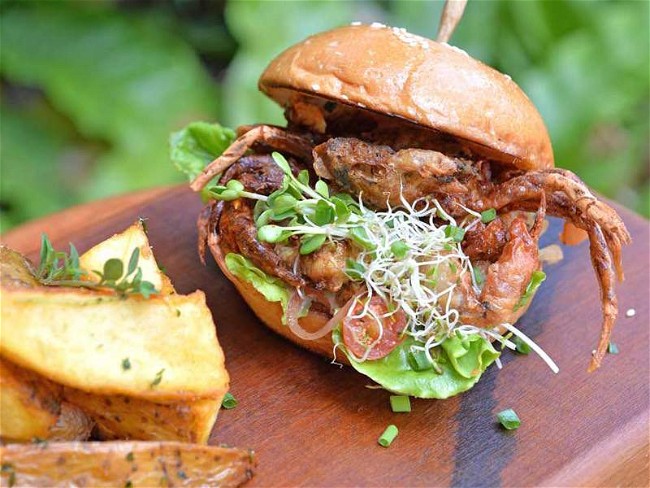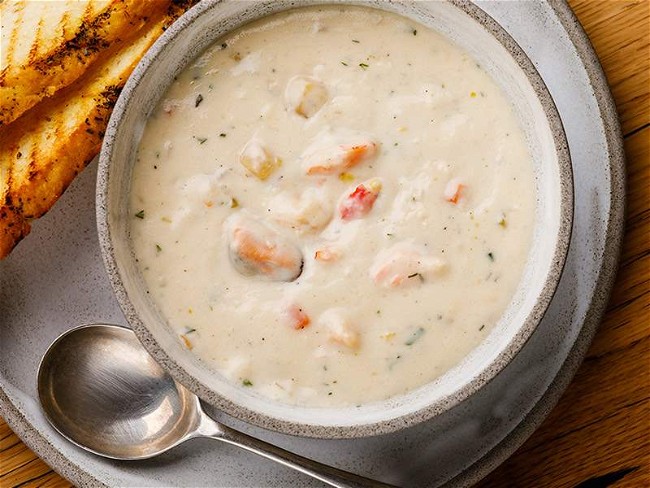Your Essential Guide to Crabs

Crabs may not be the loveliest creatures on Earth; indeed, the closer you look the more “outer space monster” they appear. But don’t be deceived! While it’s true they seem some of the unlikeliest looking things you would ever want to eat, they are some of the best tasting seafood you can buy. Sweet, succulent and delicious, crabs come with a boat load of health benefits as well. Let’s go crabbing with Robert DiGregorgio, FultonFishMarket.com’s Head of Quality Control.
What is Red King Crab?
Let’s begin with the Red King Crab (Paralithodes camtschaticus), one of the largest and most impressive crabs in the world. These huge crabs have an interesting ancestry, and are now believed to be related to hermit crabs, of all things.
They are caught off the Alaskan or Norwegian coast in the Fall and early Winter, and as anybody who has ever seen The Deadliest Catch knows, that time of year can have the worst storms and most dangerous weather. Owing to a very limited quota and short fishing season, these boats are forced to take dangerous risks, and coupled with very high consumer demand makes red king crab some of the most extravagant and expensive crabs in the world.
The flavor is sweet, moist, rich and succulent. They have a beautiful look as well, the flesh is snow white with streaks of pink and with a delicate texture.
What is Snow Crab?
Snow Crab (Chionoecetes opilio) are smaller than the king crab, and sometimes referred to as "Queen Crab." The best quality, most sought after “opies” are from Canada, and these are found on both the Atlantic and Pacific coasts. While there is an American Snow Crab fishery in Alaska, most snow crab consumed in the U.S. is from Canada.
It is a highly regulated fishery, in part to meet American concerns but also to maintain the biomass. Snow crabs have a much longer season compared to king crab, starting in late Fall and can last months, making them more available and less expensive than king crab. The quality is no less caliber, however. These crabs also have snow white meat, a sweet taste and a somewhat firmer texture than king crab. Snow crab are also much easier to eat, thanks to their thinner, smoother shells which can be easily cracked with your hands, and the meat easily shredded.
Pasteurized Crab Meat
Pasteurized crabmeat (Portunus armatus) is made with the beautiful blue swimmer crab, a species of crab not unlike our own blue claw crab found here on the East Coast. These crabs have a beautiful blue color with white spots and are an important food supply all through the Indo-Pacific region. They are mainly processed in Indonesia, India, Thailand, Sri Lanka and The Philippines. The meat is very white, with a firm texture and a mild, delicate flavor. Because this product is pasteurized, it can remain unopened in your refrigerator for weeks and can be used at your convenience.
What are the different types of crabmeat?
Jumbo Lump
Jumbo lump crabmeat is made from the two muscles attached to the crab's fins. It is coveted for its large size, bright white hue, and fabulous taste. It is used mainly in dishes where the size of the meat matters, such as crab cocktail salads.
Super Lump
Super lump crabmeat is made from broken jumbo lump pieces and large pieces of white body meat. It is a great choice for crab cakes, casseroles, salads, and more.
Lump
Lump crabmeat is a blend of broken jumbo lump and special crabmeat, which are smaller pieces. It is used in crab cakes and is an excellent choice for stuffing seafood, mushrooms, or poultry.
Special
Special crabmeat is made from the smaller flakes of white meat from the crab’s body. This is often referred to as the "utility crabmeat" because it has so many applications. You can use it for quesadillas, wraps, soups and salads.
Claw
Claw crabmeat is picked from the fins of the crab. It is brown in color and has a fuller flavor profile. This fuller flavor makes it perfect for dishes with heavy sauces, dips, or soups, as the flavor still shines through.
Cocktail Claws
Claw fingers or cocktail claws are made from the first section of the crab claw. A part of the shell has been removed. The color of the meat is brown and is perfect for sauces or dips.
What are Stone Crab Claws?
Stone crab (Menippe mercenaria) is found all along the East Coast of the U.S. from Connecticut to Florida and is widely caught for food, with 99% of all stone crab claws eaten in this country coming from Florida. This is another very highly regulated and sustainable fishery. The current season is from October 15th to May 15th and only claws of 2¾-inches are allowed to be taken.
The crab is then returned, alive, to the ocean where it will regenerate another claw. In this way, the returning crab has another chance to make baby crabs, thus ensuring there will be crabs to enjoy for years to come. Aside from the size of the claws that may be taken, there are other restrictions as well. For example, traps must conform to state regulations, no female crabs with roe may be taken, no harvesting at night, and other measures to ensure a healthy crab population.
Stone crab claws are generally sold in four sizes: medium, large, jumbo and colossal. They are famous for their sweet taste and very flaky meat.
What are Jonah Claws?
Jonah crabs (Cancer borealis) are closely related to the West Coast’s Dungeness crab, and are delicious in their own right. Smaller but similar in appearance, Jonah crabs are found in New England waters, mostly Maine to Rhode Island. Once considered a nuisance by-catch by lobstermen, they would either give them away or take them home for dinner. About 10 years ago, as more and more Jonah crabs found their way into lobster traps, and more and more people were seeking a less expensive “stone claw,” the result was a no-brainer. Jonah crab claws have a sweet taste and a great flaky texture. They can be enjoyed cold with a dipping sauce like the Florida stone crab claws or by themselves.
What is Soft Shell Crab?
Soft shell crabs (Callinectes sapidus) are blue claw crabs harvested just after they have shed one shell and before the new one hardens. They are a seasonal treat that I wait for every year and have enjoyed since I was a little kid. They start showing up in the Spring and can be available through October, depending on supply and demand. With our soft shell crabs, there is no cleaning required as we do it all for you. We offer the most popular size of soft shell crabs available: jumbo (5-5½”).
Preparation is simple, and you can make these as fancy or as simple as you want. Soft shell crabs can be fried, sautéed, broiled, eaten hot or eaten cold or as part of a delicious summer salad. A fried soft shell crab sandwich is crunchy, sweet and, for me, is the perfect summer meal. Try our soft shell crab sandwich recipe below.
Health Benefits of Eating Crabs
Crabs are very high in protein. In fact, they have twice as much protein as chicken. Rich in vitamins and minerals, low in fat, high in phosphorus and selenium, low in calories, and zero carbs, crabs are a delicious, healthy seafood.
We believe all the varieties of crab and crab products at FultonFishMarket.com offer something special, and it will be hard for you to pick a favorite. All our crabs are exceptional, unique and delicious.
Best Crab Recipes
Make delicious restaurant quality crab cakes at home with this simple and tasty crab cake recipe made with fresh crabmeat.
Soft Shell Crab Sandwiches Recipe
Soft shell crab sandwiches are a convenient and tasty dish perfect for picnics and casual get togethers. This recipe is nutritious and packed with flavor.
For a perfect weeknight meal, try this simple crab and corn chowder recipe! It combines the ease of our fresh lump crabmeat with the convenience of frozen corn.



